Travel Guide to Lisbon: A 4-Day Itinerary
Lisbon, the vibrant capital of Portugal, emerges as a fascinating destination where rich history intertwines harmoniously with vibrant culture and Mediterranean charm. Also known as the “City of Seven Hills,” Lisbon will captivate you with its picturesque streets, lively old neighborhoods, iconic monuments, and unique atmosphere.
Travel Guide
Lisbon
Lisbon, the vibrant capital of Portugal, emerges as a fascinating destination where rich history intertwines harmoniously with vibrant culture and Mediterranean charm. Also known as the “City of Seven Hills,” Lisbon will captivate you with its picturesque streets, lively old neighborhoods, iconic monuments, and unique atmosphere.
Lisbon Itinerary (4 Days)
Welcome to Lisbon, a vibrant city that will captivate you with its Mediterranean charm, rich history, and unique atmosphere!
This comprehensive travel guide will lead you through Lisbon’s most fascinating attractions, offering you an authentic and memorable experience. Get ready to explore picturesque neighborhoods, iconic monuments, culinary delights, and stunning landscapes.
The proposed itinerary is the result of my personal experience, providing you with 100% original information and useful recommendations to make the most of your stay in Lisbon.
Day 1: Discover Lisbon on Foot
- Morning: Start your day on Pink Street, a vibrant area filled with charming shops and cafes. Admire the Arco da Rua Augusta, also known as the Rua Augusta Arch, an impressive triumphal arch located in the heart of Lisbon at the eastern end of Rua Augusta, the city’s main pedestrian street. Completed in 1875, it commemorates the city’s reconstruction following the devastating earthquake of 1755 and the subsequent fire.
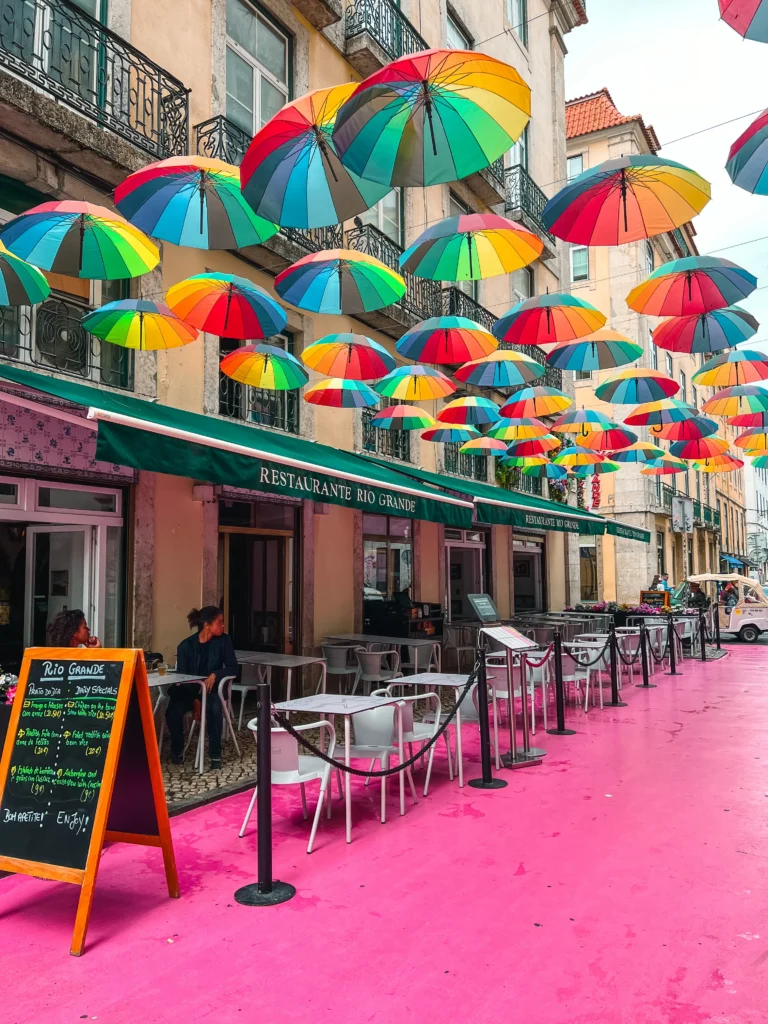
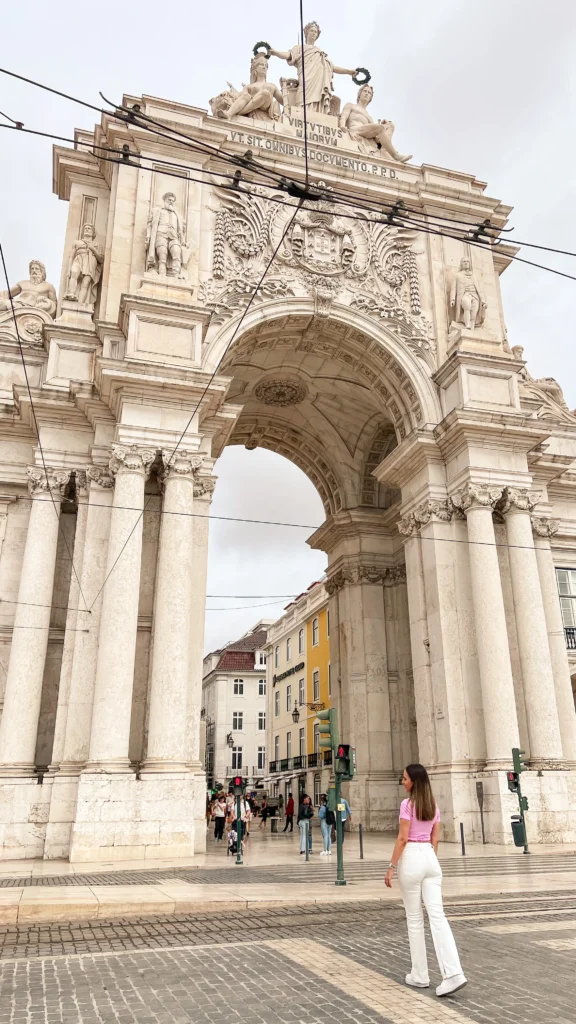
- Stroll along the banks of the Tagus River, admiring the spectacular city views from Cais das Colunas. Visit the Santa Maria Maior Cathedral, an impressive Gothic cathedral with a rich history. Santa Maria Maior Cathedral, also known as Sé de Lisboa, is an imposing Gothic cathedral located in the historic center of Lisbon. It is the oldest cathedral in the city, built on the site of a former Moorish mosque in the 12th century. Over the centuries, the cathedral has undergone numerous modifications and restorations, reflecting a variety of architectural styles, from Romanesque to Gothic and Baroque.
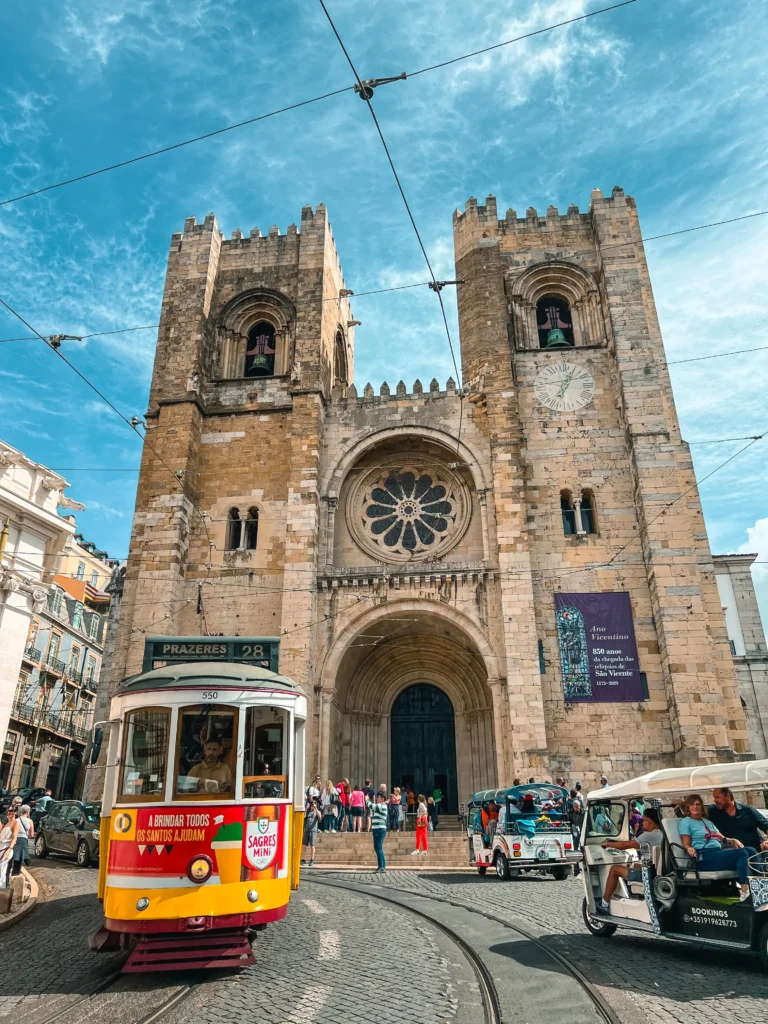
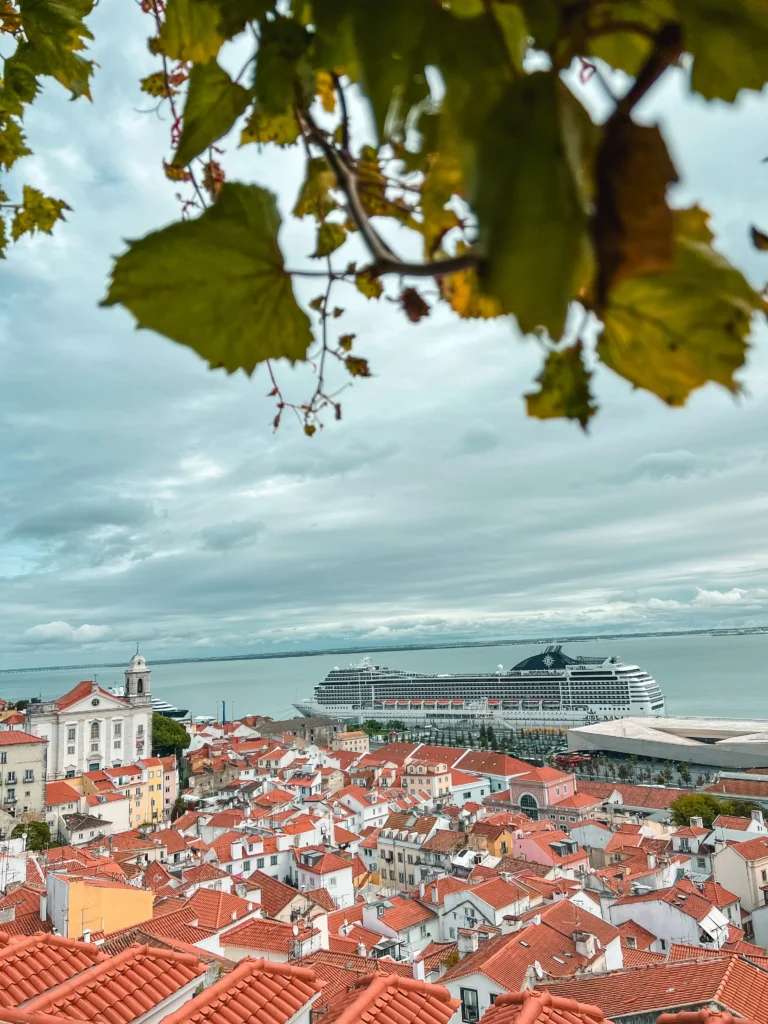
- Lunch:
Indulge in a variety of delicious dishes at Timeout Market, where you can find a wide range of restaurants and bars offering local specialties. The average cost for a meal is approximately 15 euros. Culinary Recommendations at Timeout Market Lisbon:
To help you choose what to eat at Timeout Market Lisbon, here are some recommendations:- Appetizers:
Pastel de nata: A delicious and crispy egg custard tart, an unforgettable local specialty (3 pastéis de nata cost approximately 5.2 euros).
Queijo da Serra: Strong and spicy sheep cheese, often served with fresh bread and olives.
Coxinhas: Delicious croquettes filled with chicken or cheese, a popular Portuguese snack. - Main Courses:
Francesinha: A decadent Portuguese sandwich filled with various types of meat, sausage, and cheese, topped with spicy sauce and toppings.
Bacalhau à Brás: Salted dried cod, boiled and mixed with potatoes, onions, and eggs, a traditional Portuguese dish.
Arroz de Pato: Slow-cooked duck rice with a rich flavor and creamy texture. - Desserts:
Sericaia: A delicious egg pudding with a hint of cinnamon, a traditional Portuguese specialty.
Bolo de Bolacha: Cake made with crushed biscuits, cocoa, and eggs, a simple yet delicious dessert.
Ginjinha: Sweet and spicy Portuguese cherry liqueur, often served as a digestif.
- Appetizers:
In addition to these recommendations, Timeout Market Lisbon offers a variety of other culinary options, from sushi and pizza to burgers and salads. You’ll definitely find something to enjoy!
Tips:
- Arrive early: Timeout Market can get crowded, especially during lunch and dinner. Arrive early to avoid queues.
- Explore different stalls: Don’t limit yourself to just one stall! Explore the various stalls to discover a variety of culinary delights.
- Be prepared to wait: Some stalls may be busier than others, so be prepared to wait a bit for your food.
- Enjoy the atmosphere: Timeout Market is a vibrant and lively place. Enjoy the atmosphere and the unique culinary experience.
Afternoon
Ride the Elevador da Bica, an old tram that will take you through the picturesque neighborhoods of the city, offering you a unique perspective of Lisbon.
Explore the culture: Visit the Museo Dos Coches, a museum hosting an impressive collection of royal carriages, and MAAT, a museum of modern and contemporary art located on the banks of the Tagus River.
Taste tradition: Discover Pasteis de Belem, a famous pastry shop where you can enjoy the best Portuguese custard tarts. You’ll pay approximately 5.2 euros for 3 pastéis de nata.

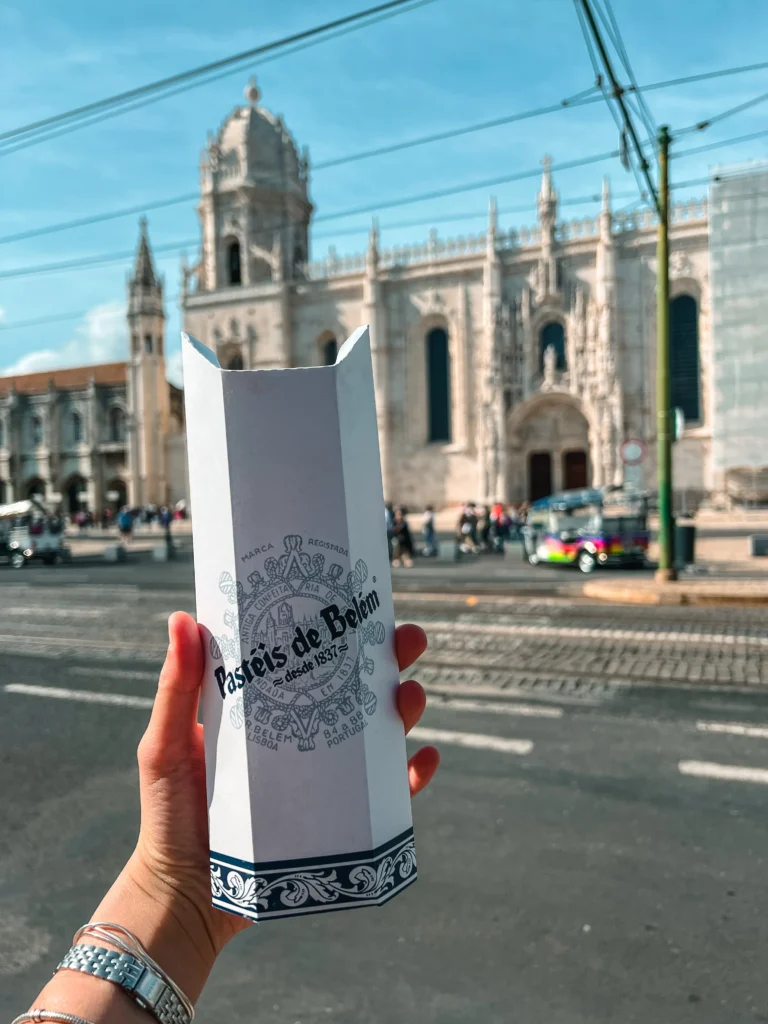

Evening
Visit the Belem area, where you’ll discover Mosteiro dos Jeronimos, a Gothic monastery included in the UNESCO World Heritage list, and Padrao dos Descobrimentos, an imposing monument dedicated to the Portuguese Age of Discoveries.
Admire the sunset: End your day with a stunning view of the sunset from Torre de Belem, a medieval tower located on the banks of the Tagus River. The entrance ticket costs 8 euros.
Tickets for Torre de Belem can be purchased both online and physically at the monument:
Online:
- Official website: You can purchase tickets online from the official Torre de Belem website:
- Other platforms: Tickets can also be found on other online ticket platforms such as GetYourGuide, Viator, and Musement.
Physical:
- Ticket office: Tickets can be purchased directly from the ticket office located at the entrance to Torre de Belem.
Tips:
- Purchase online: It is recommended to buy tickets online, especially during the tourist season, to avoid queues at the ticket office.
- Tourist cards: If you plan to visit multiple attractions in Lisbon, consider purchasing a tourist card like Lisboa Card, which offers free or discounted access to Torre de Belem and other monuments.
- Opening hours: Torre de Belem is open daily from 10:00 to 18:30 (last entry at 18:00).
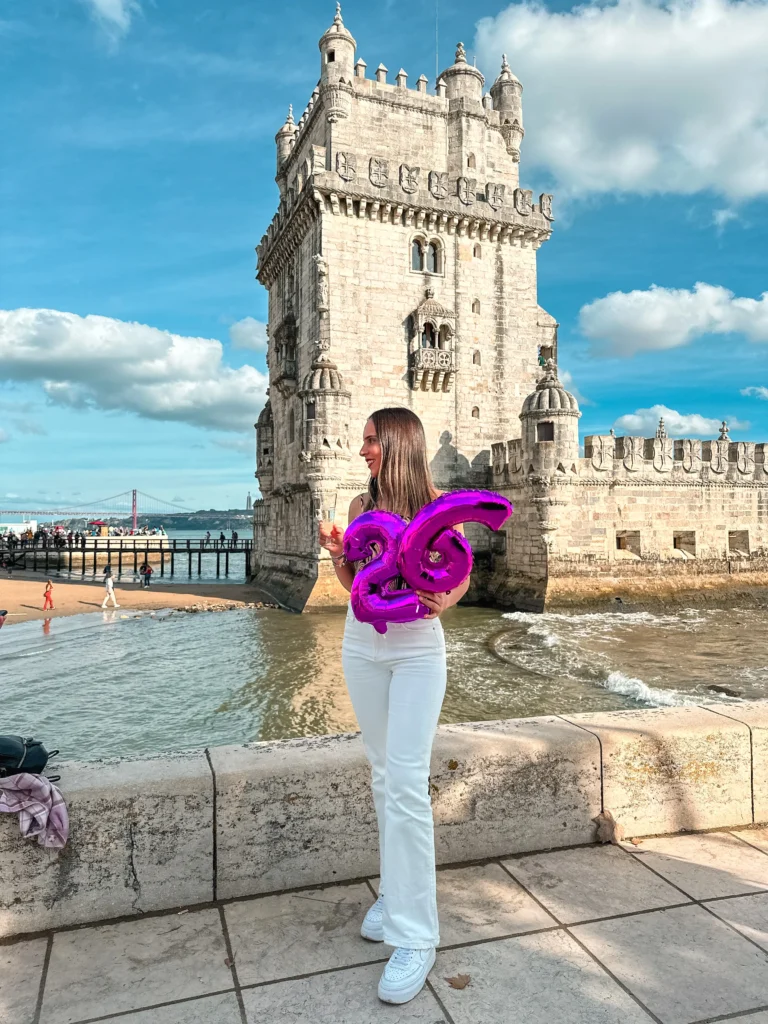
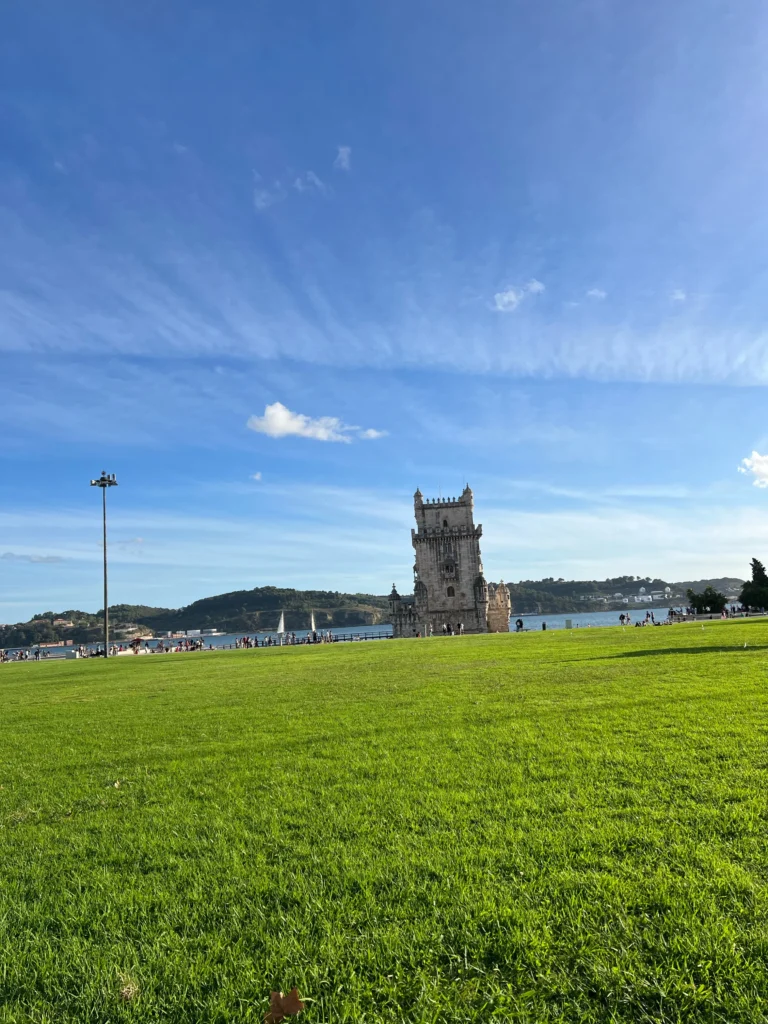

Day 2: A Getaway to Cascais and Cabo da Roca
- Morning: Early in the morning, take the train from Lisbon to Cascais, a picturesque resort town just 40 minutes away.
- Discover Cascais: Spend the first part of the day exploring Cascais, enjoying Rainha Beach, Cascais Marina, and the Museu Condes de Castro Guimaraes.
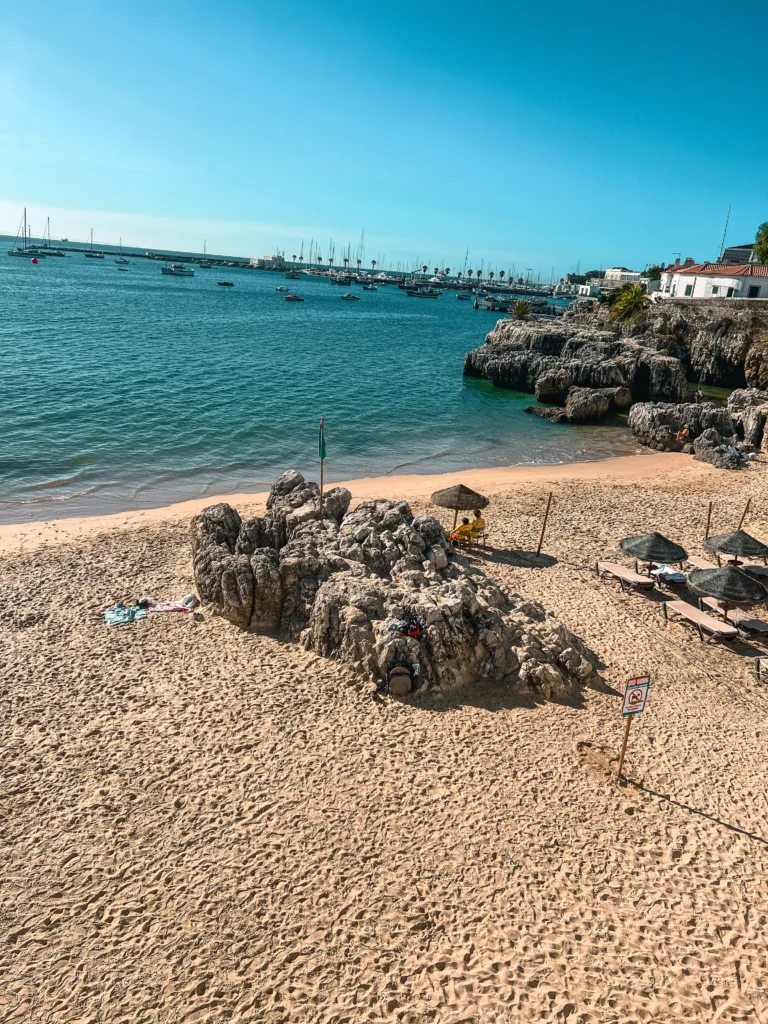
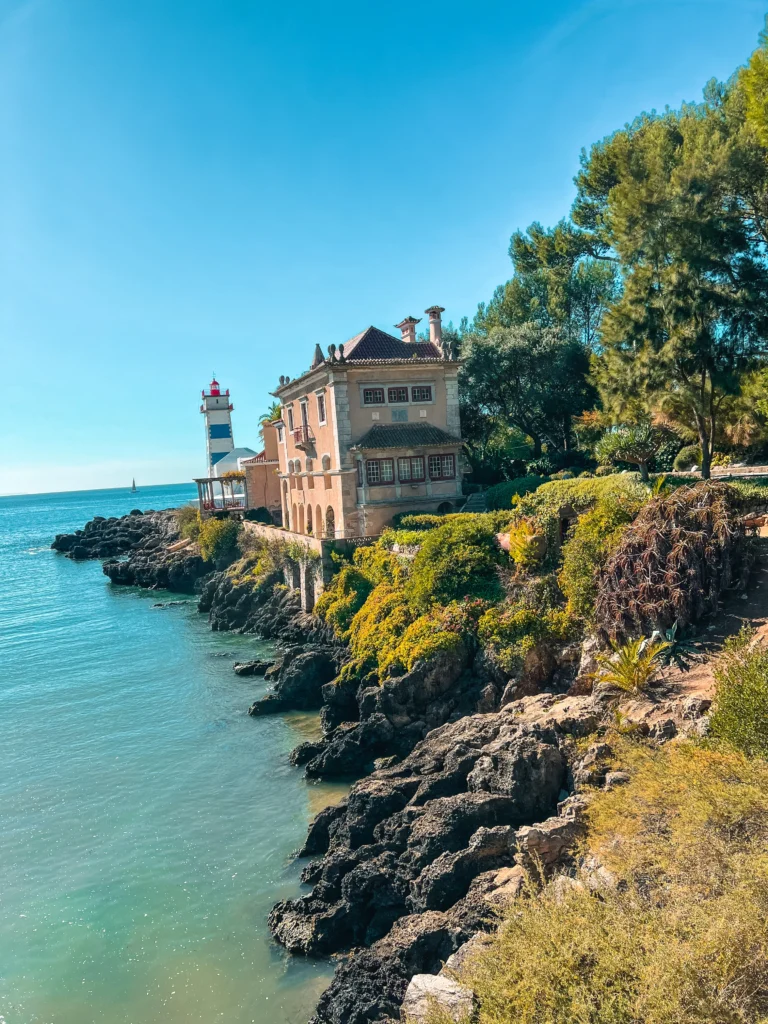
Adventure at Boca de Inferno: Visit Boca de Inferno, a spectacular natural formation created by wave erosion.
Journey to Cabo da Roca: Take an Uber to Cabo da Roca, the westernmost point of mainland Europe. You can also get there by bus 403/1624 (round-trip ticket costs 5.4 euros per person, not included in the Lisboa Card).
Cabo da Roca, located in Sintra, Portugal, is the westernmost point of mainland Europe, Eurasia, and the African continent. It is a dramatic rocky promontory rising 140 meters above the Atlantic Ocean, offering stunning views and a unique atmosphere.
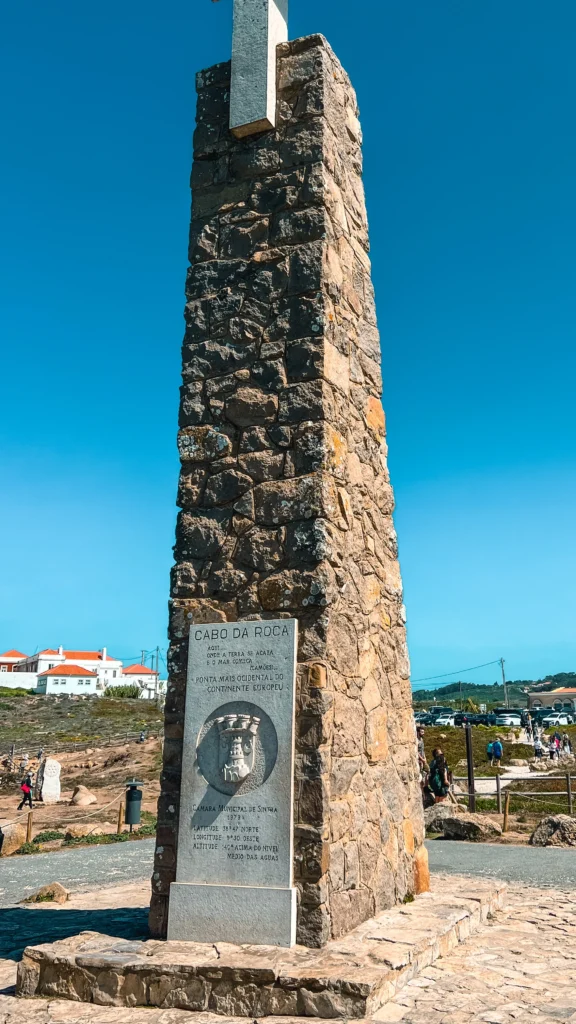
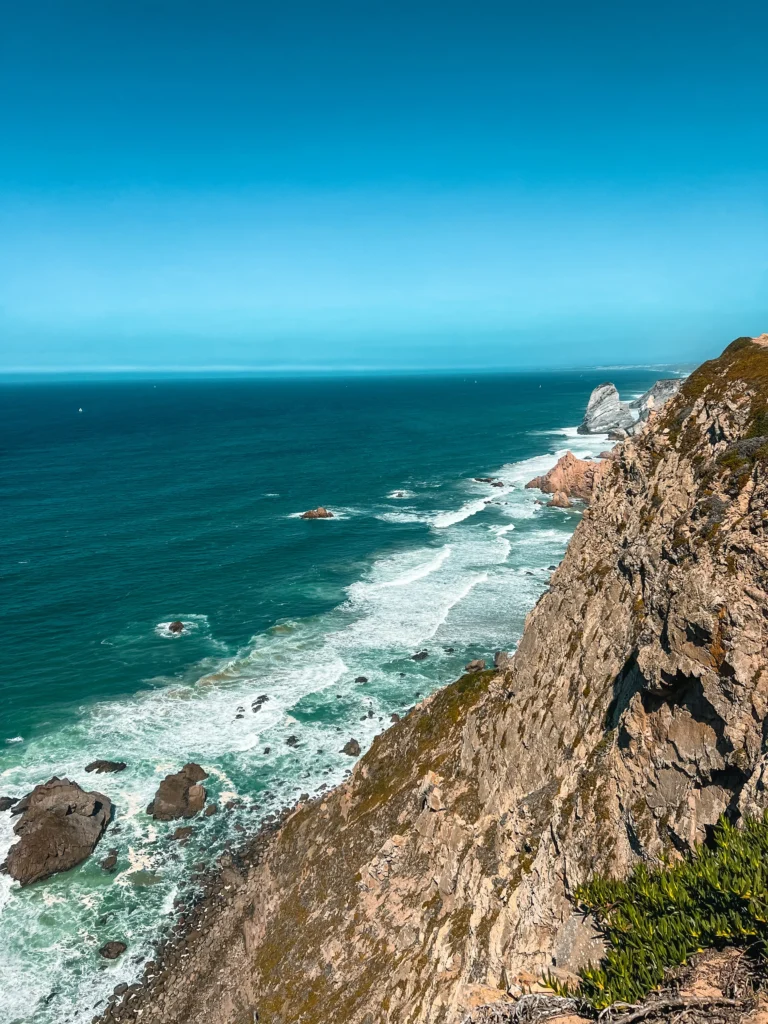

- Praia da Ursa, also known as Bear Beach, is an isolated and stunning beach located on the Atlantic coast of Portugal, near Cabo da Roca, the westernmost point of mainland Europe. Its name comes from the bear-like rock formations that rise from the water. The beach is a perfect destination for nature lovers seeking a peaceful escape and an authentic Portuguese experience.
Practical Information:- Access: The beach is accessible to the public, but the access is not easy. There is no direct public transportation to Praia da Ursa. You can reach it by car, taxi, or Uber from Lisbon (approximately 1 hour) or Sintra (approximately 30 minutes), followed by a 30-minute hike on a steep path.
- Facilities: There are no facilities on the beach, such as toilets, showers, or restaurants. It’s important to come prepared with everything you need, including water, food, sunscreen, and a hat.
- Best Time to Visit: The best months to visit Praia da Ursa are spring, summer, and fall when the weather is warm and sunny.
Tips:
- Wear Comfortable Shoes: The hike to the beach requires comfortable walking shoes.
- Bring Supplies: Don’t forget to bring water, food, sunscreen, and a hat, as there are no shops or restaurants on the beach.
- Respect the Environment: Praia da Ursa is a beautiful natural area. Make sure to keep it clean by taking your trash with you.
Praia da Ursa is a unique and picturesque destination, perfect for those seeking an authentic Portuguese experience away from the crowds. With its stunning natural beauty, clear waters, and tranquil atmosphere, Praia da Ursa will surely leave you with unforgettable memories.
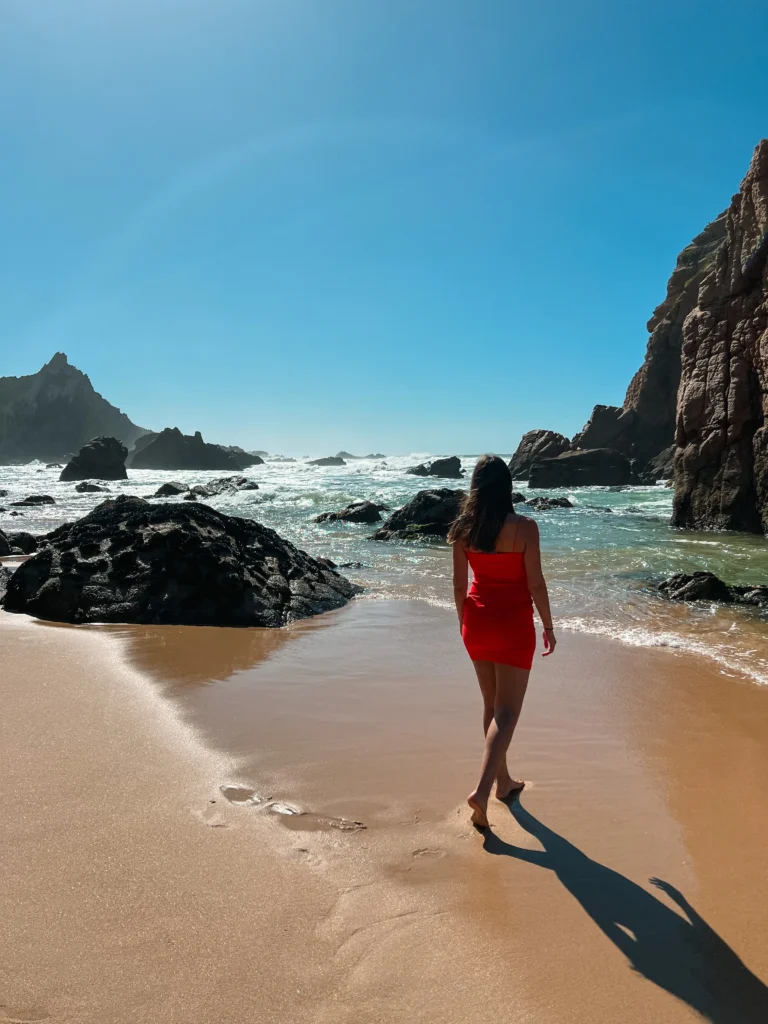
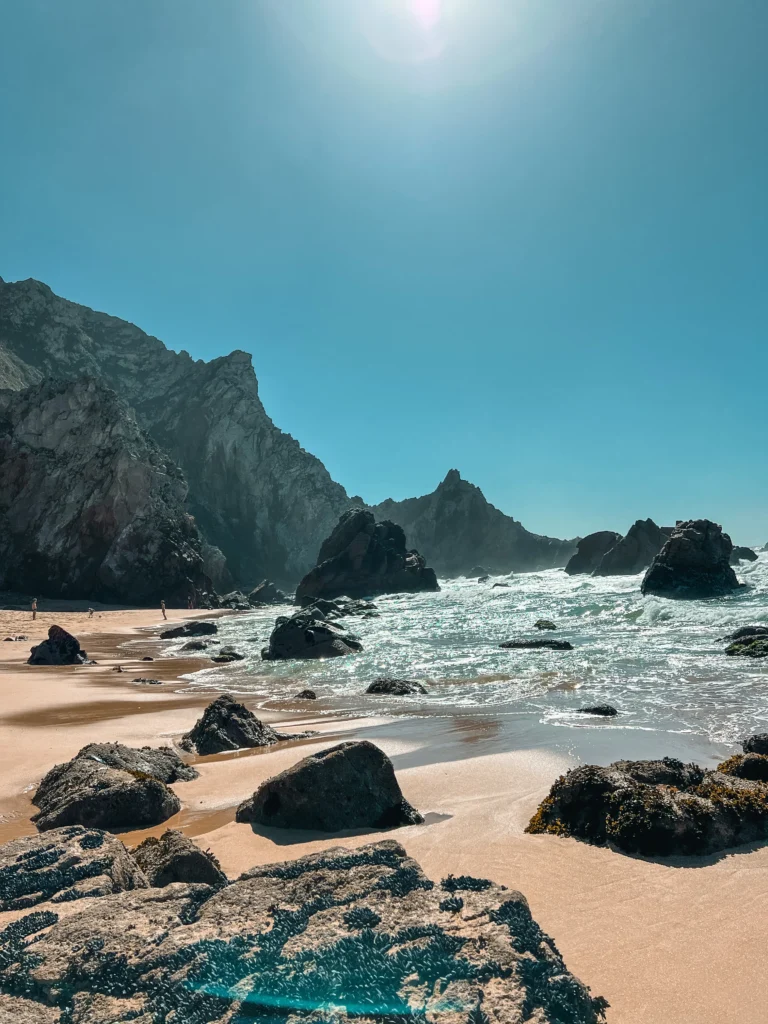

How to Get from Lisbon to Cascais
There are several convenient ways to travel from Lisbon to Cascais, each with its own advantages and disadvantages:
Train:
- Most popular option: Trains frequently depart from Cais do Sodré station in Lisbon (approximately every 30 minutes) and arrive in Cascais in about 40 minutes.
- Advantages: Fast, comfortable, beautiful coastal views.
- Disadvantages: Can be crowded during tourist season, tickets may be more expensive than other options.
Cost: Round-trip ticket: €4.60. - More information: here
Bus:
- A cheaper alternative: Buses 403 and 405 depart from Cais do Sodré station and various stops in Lisbon, reaching Cascais in approximately 45-60 minutes.
- Advantages: Cheaper than the train, more stops in Cascais.
- Disadvantages: Slower than the train, can be crowded during tourist season.
- Cost: Round-trip ticket: €3.65.
Uber/Taxi:
- Convenient and fast: You can take an Uber or a taxi directly from Lisbon to Cascais. The journey takes about 30 minutes, depending on traffic.
- Advantages: Flexibility, comfort, direct to your destination.
- Disadvantages: The most expensive option, the price can vary depending on demand.
- Cost: Approximately €30-40.
Private Transfer:
- A luxurious option: You can book a private transfer from Lisbon to Cascais with a car or minibus.
- Advantages: Maximum comfort, flexibility, ideal for groups.
- Disadvantages: The most expensive option, requires advance booking.
- Cost: Variable, depending on the company and type of vehicle.
Tips:
- Purchase a Lisboa Card: If you plan to make several trips by train or bus, a Lisboa Card can be a cost-effective option. It offers unlimited access to public transportation in Lisbon and Cascais, as well as to tourist attractions.
- Avoid peak hours: If traveling during tourist season, avoid peak hours (early morning and late afternoon) when trains and buses can be crowded.
- Enjoy the view: Regardless of the mode of transport chosen, don’t forget to admire the beautiful views of the Portuguese coast during your journey!
Choosing the ideal mode of transport depends on your individual needs and preferences.

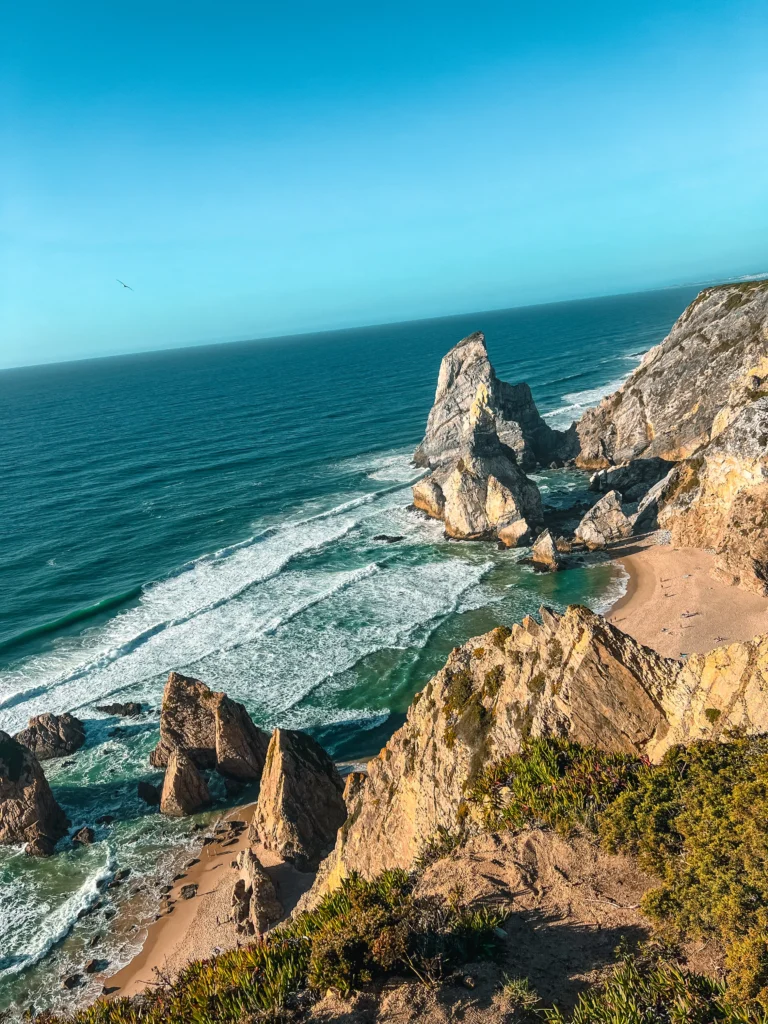
Day 3: Sintra
We set off for Sintra early in the morning to visit the castles and avoid long queues. The same transport options for Cascais are also valid for getting to Sintra.
Pena Palace
The first castle we visited was Pena Palace. Pena Palace is one of the most iconic castles in Portugal, situated on a hilltop in the Sintra-Cascais Natural Park. Built in the 19th century by King Ferdinand II, the castle combines various architectural styles, including Gothic, Renaissance, Moorish, and Manueline. Its vibrant colors and fairy-tale design make it a unique attraction for visitors. Although we arrived at opening time, there was already a long queue at the entrance. To reach the castle, you can take bus 434, which costs €4.10 for a single ticket or €7.60 round-trip. Keep in mind that the bus can be full, and you might not find a seat. Another option is to use Uber or hike up on foot. We bought our tickets online and paid €13.30 per person. Tickets can also be purchased on-site, but you may face long queues.
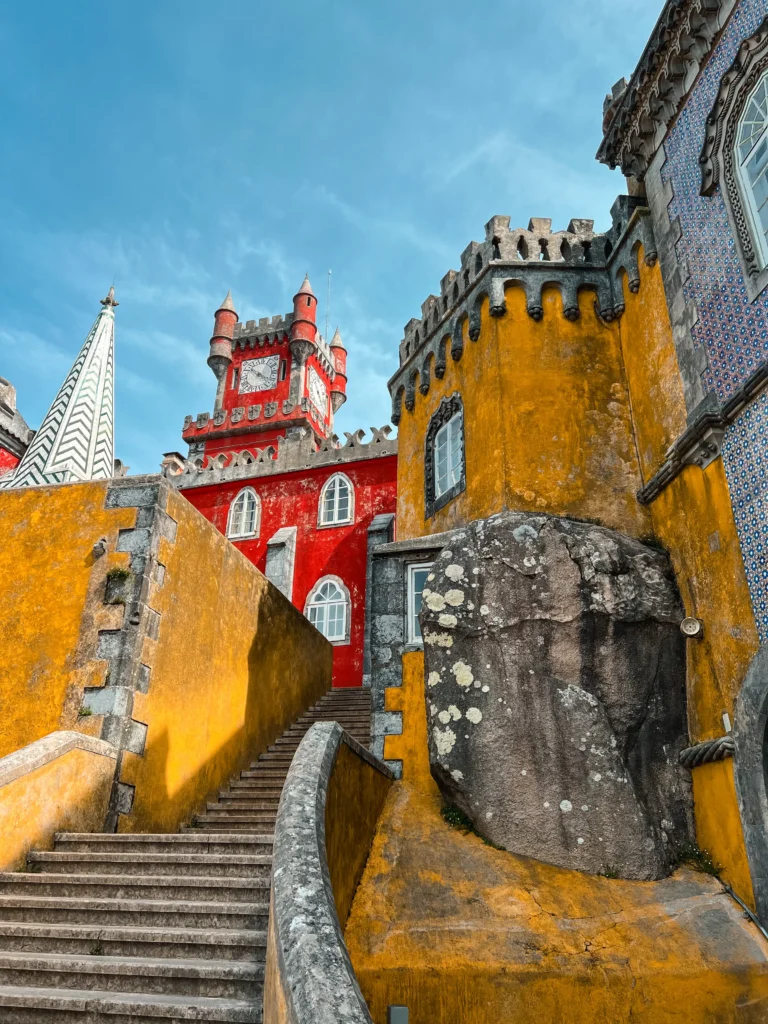


Castelo dos Mouros
After visiting Pena Palace, we headed to Castelo dos Mouros, another impressive site offering spectacular views of the Sintra region. Castelo dos Mouros is a medieval fortress built in the 8th century by the Moors. Strategically located on a rocky hill, the castle provides breathtaking panoramic views of Sintra and the Atlantic Ocean. Its massive walls and watchtowers allow you to walk around and enjoy the stunning scenery while exploring its ancient history.
Lunch at Xentra
For lunch, we chose the restaurant Xentra, located in the town center. The food was delicious and provided the energy we needed to continue our exploration.
Quinta da Regaleira
The next stop was Quinta da Regaleira. The entrance ticket was €11 per person, and we purchased it at the entrance. The gardens and buildings here are full of mystery and beauty, definitely worth visiting. Quinta da Regaleira is a romantic palace near the center of Sintra. Built in the early 20th century by millionaire António Augusto Carvalho Monteiro, the complex is known for its lush gardens, underground lakes, mysterious grottoes, and esoteric symbolism. The highlight of the visit is the “Initiation Well,” a spiral staircase that descends deep into the earth, symbolizing a spiritual journey. Unfortunately, we were unable to see the well due to the extremely long queue, which would have required a wait of about 1-2 hours to reach the front.
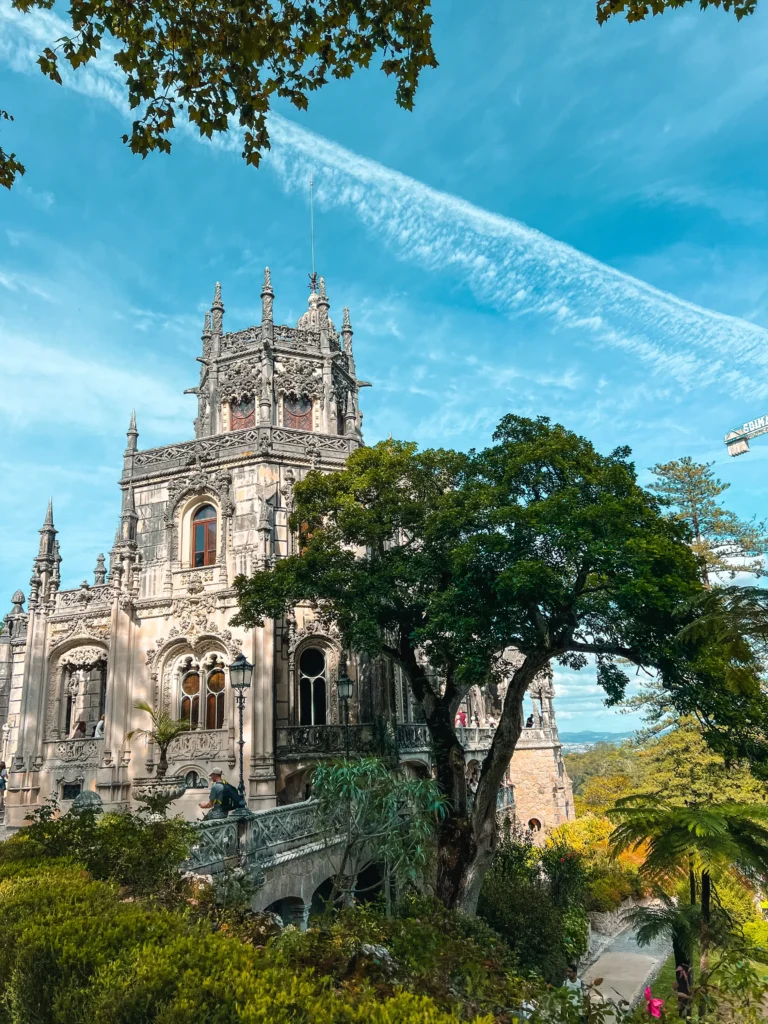
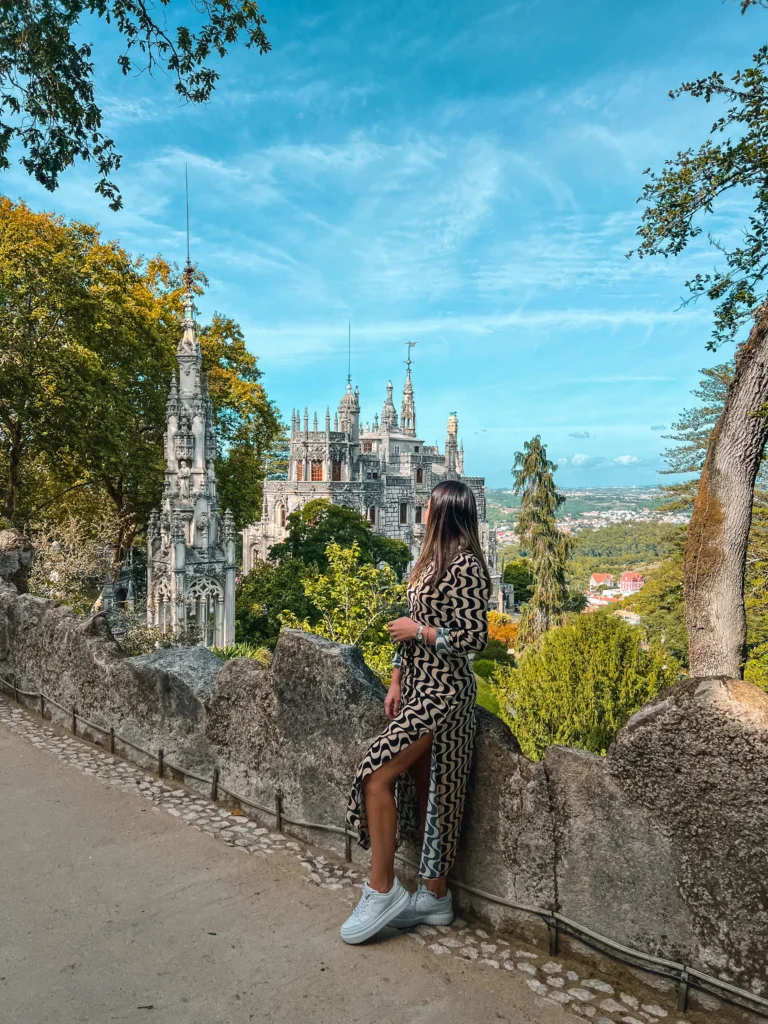
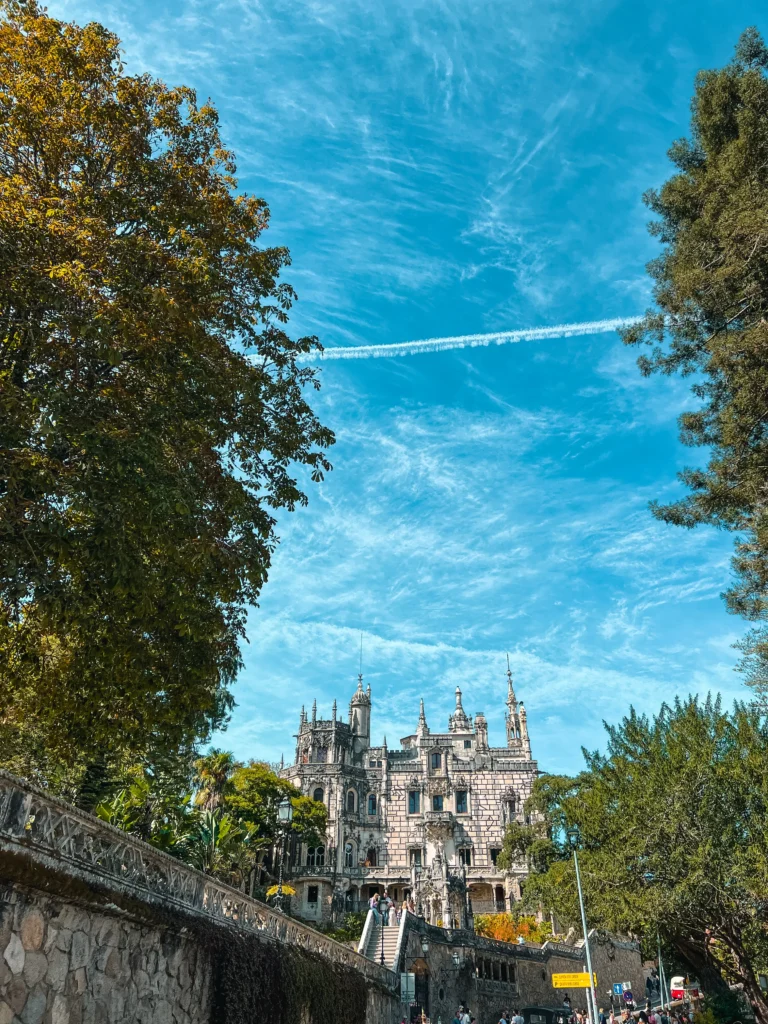
Fabrica de Nata
After so many visits, we took a sweet break at Fabrica de Nata, where we savored the famous pastéis de nata, a true Portuguese delicacy.
Ginjinha
While in Sintra, we also tried the traditional ginjinha, a cherry liqueur. Each glass cost €2.5 and it was an unforgettable authentic experience.
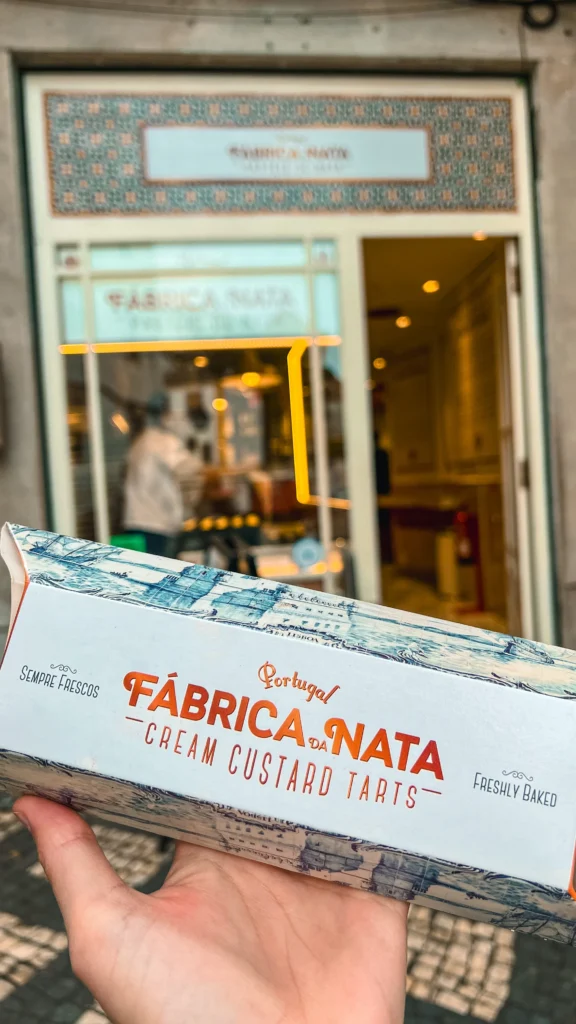


To visit the castles, we didn’t use the bus as it was very crowded. Instead, we opted for Uber, which turned out to be a more convenient option.
Day 4: Vibrant Exploration of Lisbon
Tram 28 Ride
Our day started with an iconic ride on Tram 28. This historic tram traverses some of Lisbon’s most picturesque neighborhoods, offering a sweeping view of the city. Be sure to arrive early to avoid the crowds and secure a good seat.
Bairro Alto – The Most Colorful Neighborhood
After the tram ride, we explored Bairro Alto, renowned for its narrow, lively, and colorful streets. This neighborhood is famous for its vibrant nightlife, as well as its charming boutiques and cafés.
Rossio Square
Our next stop was Rossio Square, one of Lisbon’s most famous squares. Here, we admired the impressive architecture and soaked in the lively atmosphere of the city. The square is the perfect spot to relax and enjoy a street performance.
Amorino Gelato Lisboa Augusta
For a sweet break, we headed to Amorino Gelato Lisboa Augusta, where we indulged in a delicious gelato. This is a must-visit for ice cream lovers, offering a variety of delectable flavors.
Praça do Comércio
After dessert, we moved on to Praça do Comércio, a grand square situated along the River Tagus. Here, we admired the Arco da Rua Augusta and strolled along the quay, enjoying the stunning views of the water.
Castelo de São Jorge
Then, we climbed to Castelo de São Jorge, a medieval castle perched on a hilltop that offers panoramic views of Lisbon. We explored the fortifications and the museum, learning about the fascinating history of the castle and the city.
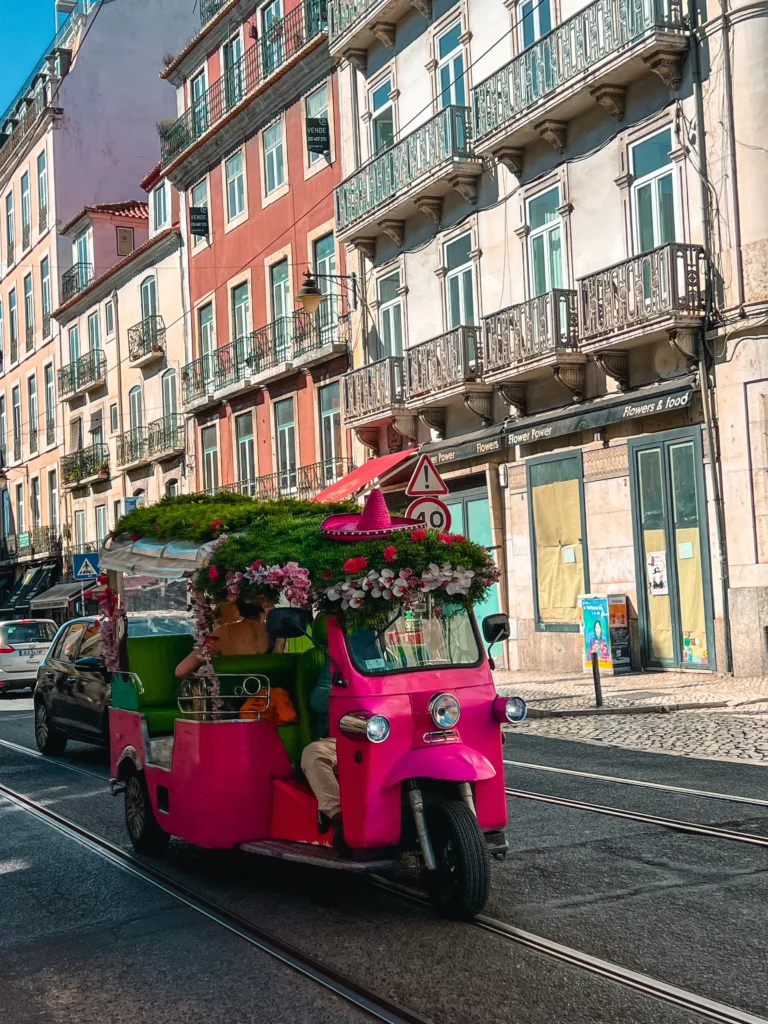
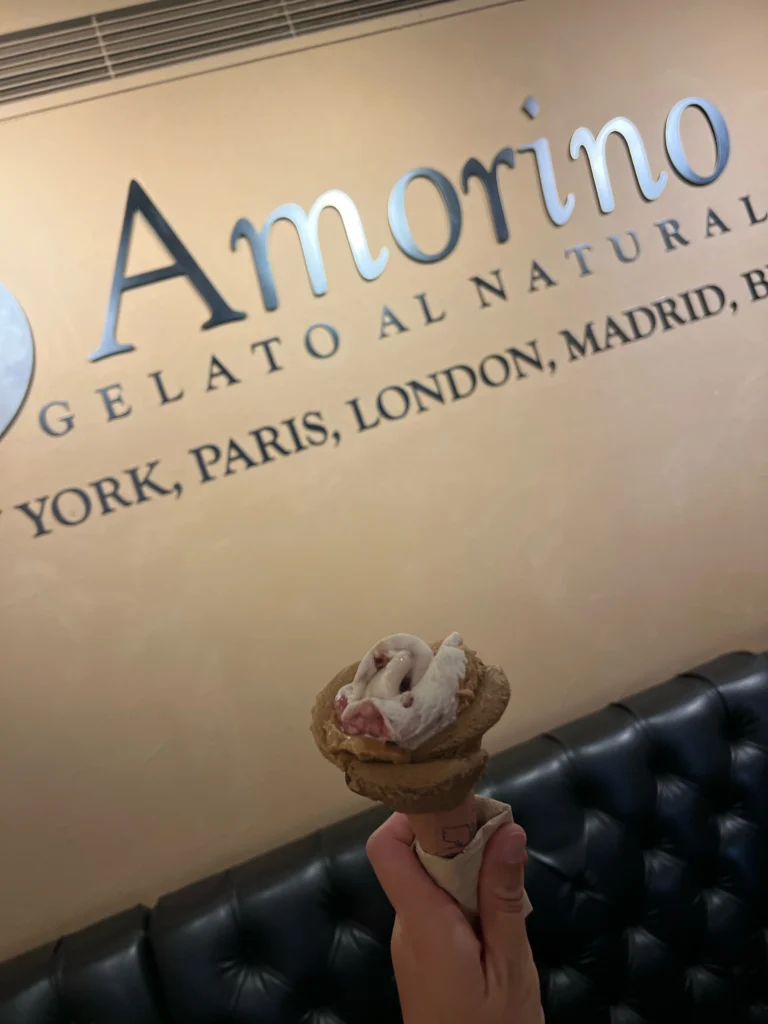

Alfama Neighborhood
After visiting the castle, we wandered through Alfama, the oldest neighborhood in Lisbon. Its narrow, labyrinthine streets and traditional houses offer an authentic and charming atmosphere. Here, we discovered small taverns where fado, the traditional Portuguese music, is performed.
25 de Abril Bridge and Cristo Rei Statue
In the evening, we took an Uber to visit the 25 de Abril Bridge and the Cristo Rei statue. The bridge, reminiscent of San Francisco’s Golden Gate, offers an impressive view, while the Cristo Rei statue, inspired by the one in Rio de Janeiro, provides a spectacular panorama of Lisbon and the Tagus River.
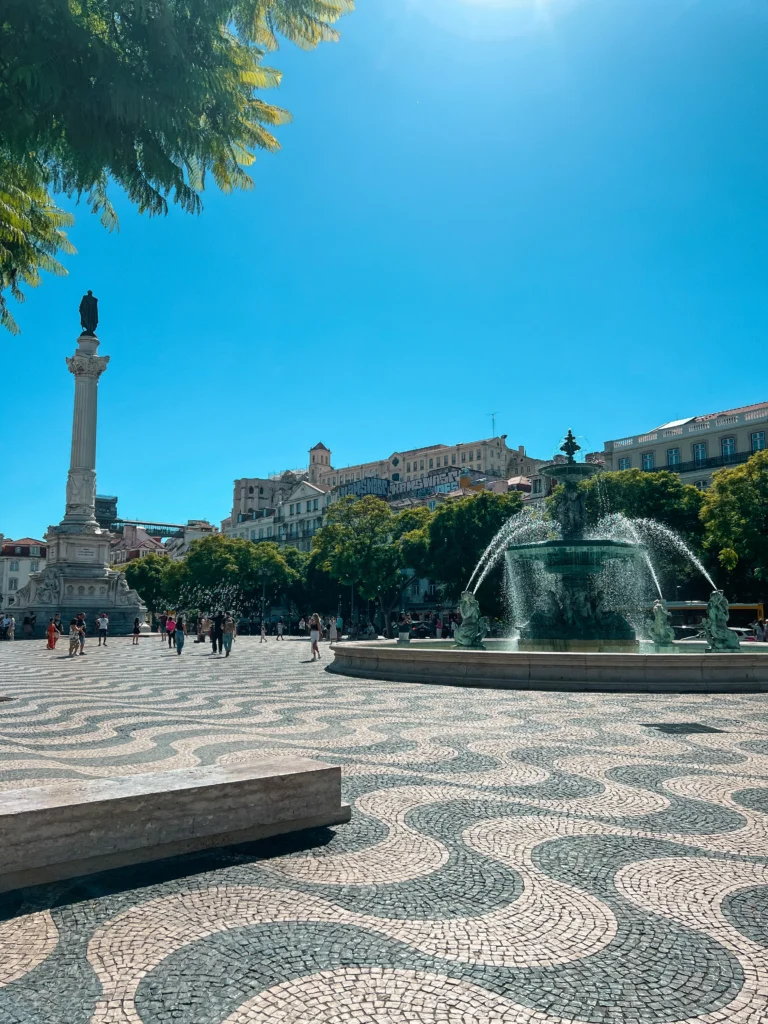


Recommended Restaurants in Lisbon
Timeout Market
Timeout Market is a must-visit destination for food lovers. Located in Mercado da Ribeira, this venue gathers the best culinary offerings in Lisbon under one roof. You can find dishes from some of Portugal’s most renowned chefs, as well as a variety of traditional and innovative foods. The vibrant atmosphere and diverse options make Timeout Market perfect for lunch or dinner.
Xentra (in Sintra)
If you’re in Sintra, the Xentra restaurant in the town center is an excellent choice for lunch. It offers delicious dishes in a pleasant and relaxing setting. The varied menu and quality service make Xentra an ideal spot to recharge after exploring the castles and gardens of Sintra.
Belcanto
Belcanto, run by chef José Avillez, is one of the most renowned restaurants in Lisbon, boasting two Michelin stars. Located in Chiado, Belcanto offers an unforgettable gastronomic experience with innovative and refined dishes inspired by traditional Portuguese cuisine.
Cervejaria Ramiro
For seafood lovers, Cervejaria Ramiro is an unmissable destination. This iconic restaurant is known for its fresh and delicious seafood served in a convivial atmosphere. From shrimp and lobster to clams and octopus, Ramiro’s menu is a feast for the senses.
Taberna da Rua das Flores
Taberna da Rua das Flores is a charming spot where you can enjoy reinterpreted traditional Portuguese dishes. Located on a picturesque street in Chiado, this small bistro offers a menu that changes daily, based on fresh and seasonal ingredients. The intimate atmosphere and friendly service complete the culinary experience.
When to Visit Lisbon
The best time to visit Lisbon depends on your weather preferences and tolerance for tourist crowds. Generally, the optimal months for travel are:
Spring and Fall (March to May and September to November):
- Weather: Pleasant temperatures and clear skies make these months ideal for exploring the city and its attractions. The moderate climate without extreme temperatures ensures comfortable walks through narrow streets and visits to museums and monuments.
- Crowds: These seasons have fewer tourists compared to summer, providing a more relaxed experience.
Summer (June to August):
- Weather: Summer brings higher temperatures, especially in July and August. Long days and abundant sunshine make it perfect for enjoying Lisbon’s coastal beaches and outdoor activities.
- Crowds: This is the peak tourist season, so it’s advisable to book accommodations and attraction tickets in advance.
Winter (December to February):
- Weather: Winter in Lisbon is mild and wet, with lower average temperatures and more rain. Despite this, the city remains an attractive destination due to its festive atmosphere and Christmas lights.
- Crowds: Tourist crowds are lower, and prices for accommodations and activities may be more affordable.
Choosing the right time to visit Lisbon depends on your personal preferences and the type of experience you wish to have in Portugal’s capital.
Travel to Lisbon
Flight
- We chose to fly with WizzAir on the Bucharest – Lisbon route, purchasing our tickets a month and a half in advance. The flight duration from Bucharest to Lisbon was approximately 3 hours and 30 minutes.
- Booking Flights: Platforms like Skyscanner offer flexibility in finding flight options from anywhere in the world, helping you select the best options for your trip.
Tips for Traveling to Lisbon
- Book Early: Especially during peak seasons, early booking for flights, accommodations, and attractions can save money and ensure availability.
- Travel Insurance: Consider purchasing travel insurance for peace of mind regarding cancellations, health issues, and other travel-related uncertainties.
- Local Transport: Utilize Lisbon’s efficient public transport system, including trams, buses, and metro, for convenient and cost-effective travel around the city.
- Local Cuisine: Don’t miss trying traditional Portuguese dishes like pastéis de nata, seafood, and local wines at recommended restaurants such as Timeout Market, Belcanto, and Cervejaria Ramiro.
By planning your visit according to your preferences and following these tips, you can ensure a memorable and enjoyable experience in Lisbon.
Accommodation
To enjoy an authentic experience in Lisbon, we chose a centrally located accommodation that allowed us to explore many tourist attractions on foot. We opted for the Charming Apartment Tram 28, where we stayed for 5 nights. The apartment, situated on the 5th floor of a building without an elevator, offers two comfortable rooms. We liked the fact that the famous yellow tram 28 passed right in front of our building. Located just 2 km from Rossio Square, we could easily reach there with a pleasant walk, exploring the beauty of Lisbon along the way.
Entry Requirements into Lisbon: European and Non-European Citizens
European Citizens:
Entry is free: Citizens of the European Union, European Economic Area, and Switzerland can enter Portugal with a valid ID card or passport. No visa is required.
Identification document: Make sure you have a valid identification document (ID card or passport) with you throughout your stay in Portugal.
Health: No medical visa is required to enter Portugal. However, it is recommended to have valid travel medical insurance.
Non-European Citizens:
Visa requirements: Citizens of countries not belonging to the EU/EEA/Switzerland need a visa to enter Portugal. Visa requirements may vary depending on your country of citizenship. We recommend checking the website of the Portuguese Embassy in your country for updated visa requirements.
Identification document: Ensure you have a valid passport with at least 3 months validity beyond your planned departure date from Portugal.
Return flight ticket: You may be asked for a return flight ticket or proof of sufficient funds to leave Portugal.
Accommodation: Proof of accommodation booking for the duration of your stay in Portugal may be required.
Sufficient funds: You may be asked for proof of sufficient funds to cover your expenses during your stay in Portugal.
How to get from Lisbon Airport to the city center
Lisbon Airport (LIS) is located approximately 7 km from the city center of Lisbon, easily accessible by various means of transportation. Choose the option that best suits your travel needs and budget:
Metro:
Red Line: The fastest and most convenient option, operating from the Airport (Aeroporto station) to the city center (stations like São Sebastião, Cais do Sodré, or Rossio) in about 30 minutes.
Frequency: Every 5-10 minutes, from 06:00 to 01:00.
Tickets: Viva Viagem tickets can be purchased from ticket machines or counters at stations. A single journey costs €1.90.
Tip: The Red Line connects with other metro and tram lines to reach various neighborhoods in the city.Bus:
Aerobus: Operates 24/7, providing direct connections from the Airport (terminals 1 and 2) to the city center (Praça da Figueira) in 45 minutes.
Carris Buses: Various bus lines (44, 91, 96, 100, 120) run from the Airport to different destinations in Lisbon.
Frequency: Aerobuses depart every 15-20 minutes, Carris buses every 10-30 minutes.
Tickets: Tickets can be purchased from the driver (cash only) or ticket machines using Viva Viagem. A single ticket costs €1.50.
Tip: Buses offer a cheaper way to get into the city but can be more crowded and slower than the metro.Taxi:
Availability: Taxis are readily available at arrivals outside the terminals.
Travel Time: Approximately 20 minutes, depending on traffic.
Cost: Price varies based on distance and time, but a typical journey costs €15-20.
Tip: Negotiate the fare with the driver before getting into the taxi.Uber/Cabify:
Ride-hailing alternatives: Uber and Cabify offer a convenient and modern way to reach the city.
App Order: Download the app and request a ride. You’ll receive driver details and an estimated fare.
Travel Time: Similar to a taxi, but may be faster during peak hours.
Cost: Comparable to a taxi, but prices may vary based on demand.
Tip: Ensure you have an active internet connection to use the app.Private Transfer:
Premium option: Private companies offer direct transfers from the Airport to your hotel or another location in the city.
Advance Booking: Online booking is required, specifying flight details and destination.
Cost: Variable, but offers comfort and exclusivity.
Tip: Ideal for groups or those seeking a personalized travel experience.Our Experience:
Arriving in the evening, we opted for a convenient and relaxing option: we booked a Bolt. The app was easy to use, and we could see the estimated fare (approximately €12) in advance. The driver arrived promptly and took us directly to our accommodation, avoiding the busy city center traffic.
Money
The official currency of Portugal is the Euro (EUR). You can easily exchange money at airports, banks, and currency exchange offices. Card payments are widely accepted in most shops, restaurants, and cafes. We used Revolut card payments everywhere.
Transport in Lisbon
- Metro: Lisbon Metro is a fast and convenient way to reach the city center and other neighborhoods. The network has four lines, identified by colors, covering most tourist areas. Tickets can be purchased at metro stations or online.
- Tram: Lisbon’s historic trams are a fun and picturesque way to explore the city. There are six tram lines, with Line 28 being the most popular, passing through Alfama and Bairro Alto. Tickets can be purchased on board the tram or with a Viva Viagem card.
- Bus: Lisbon buses offer extensive coverage of the city and surrounding areas. There is a vast network of bus lines that can take you anywhere you want. Tickets can be purchased on board the bus or with a Viva Viagem card.
- Elevator: Lisbon is known for its steep hills, and elevators (ascensores) are an easy and fun way to climb them. There are three elevators in Lisbon: Elevador de Santa Justa, Ascensor da Glória, and Ascensor da Bica. Tickets can be purchased at the elevator stations or with a Viva Viagem card.
- Ferry: Ferries offer a relaxing and scenic way to cross the Tagus River and visit neighborhoods in the southern part of the city, such as Cacilhas and Almada. Tickets can be purchased at ferry terminals or online.
- Walking: Lisbon is a compact city, and many of its main attractions are within walking distance. Walking is an excellent way to explore the city and discover its hidden neighborhoods.
- Bike: Bicycles are a popular way to get around Lisbon, especially in the city center. There are dedicated bike lanes and many companies offering bike rentals.
- Uber and Cabify: Uber and Cabify are popular alternatives to taxis in Lisbon. They can be ordered through an app and often offer competitive rates.
Walking was my preferred way to explore the city. Lisbon is a compact city, with many tourist attractions within walking distance. I was able to discover picturesque neighborhoods, hidden streets, and lively markets, enjoying the local pace and authentic atmosphere. Of course, in some cases, the roads were quite steep, making walking a challenge. Here, I opted for Uber, a convenient and affordable option. I was pleasantly surprised by the low fares, which allowed me to travel quickly and comfortably through the city, especially in more distant areas.
Lisboa Card
The Lisboa Card is a tourist card that offers free or discounted access to a variety of attractions and public transport in Lisbon, making it a valuable tool to maximize your experience in the city. Here are the key details about its benefits related to public transport:
Free Transport:
- Metro: Unlimited travel on all Lisbon metro lines (Carris Metropolitana).
- Buses: Unlimited travel on all Carris bus lines in Lisbon.
- Trams: Unlimited travel on Lisbon’s historic trams (lines 28E, 12E, and 15E).
- Lifts: Free access to public lifts in Lisbon (Elevador de Santa Justa, Ascensor da Bica, Elevador da Glória).
- Ferries: Free travel by ferry to Cacilhas from Cais do Sodré.
Additional Transport at Reduced Prices:
- Train: 50% discount on CP train lines in Lisbon (Sintra, Cascais, Azambuja).
- Sintra Tram: 50% discount on the Sintra tram.
- Airport: 10% discount on Aeroport Express (rapid bus to Lisbon Airport).
Validity:
The Lisboa Card is available in 3 validity options: 24 hours, 48 hours, and 72 hours. Choose the option that best fits the duration of your stay in Lisbon.
Purchase:
The Lisboa Card can be purchased online, at tourist information points in Lisbon, or from ticket machines at metro stations.
Tips:
Make sure to validate your Lisboa Card on the first use of public transport. Keep the card with you throughout your journey, as you will be required to present it at checks. Check the complete list of attractions and transport included in the Lisboa Card on the official website: https://www.lisboacard.org/
The Lisboa Card can help you save money and time, providing easy access to Lisbon’s most important attractions and means of transport. Make the most of your stay and explore the city with freedom and comfort!
Food
Lisbon, the vibrant capital of Portugal, seduces not only with its historical charm and picturesque atmosphere but also with its rich and refined cuisine. Prepare for a memorable culinary journey, full of intense flavors and culinary traditions that will delight your taste buds.
- Bacalhau: The undisputed king of Portuguese cuisine Bacalhau, dried and salted cod, is the emblematic ingredient of Portugal, reinterpreted in countless delicious ways. From Bacalhau à Brás (cod fried with potatoes, onion, and eggs) to Bacalhau Gratinado (cod gratin with cream and cheese), each dish reveals a variety of textures and flavors that will delight you.
- Pastel de Nata: An iconic dessert with a rich history. Don’t miss Pastel de Nata, a tart with delicate and crispy egg custard, originating from Portuguese monasteries. It is sweet and aromatic taste, complemented by a flaky crust, makes it a perfect choice for a coffee break or a light dessert.
- Pork: A variety of savory dishes Portuguese cuisine emphasizes pork, offering a wide range of tasty dishes. Cozido à Portuguesa, a hearty stew with various types of pork, vegetables, and sausages, is an authentic culinary experience not to be missed. Also, don’t forget to try Bifana (marinated pork sandwich) and Alheira (smoked sausages filled with meat, bread, and spices).
- Fresh seafood: A treasure of the Portuguese coast Lisbon, located on the Atlantic coast, boasts a variety of fresh and delicious seafood. Grilled sardines, cooked over an open fire with a unique smoky flavor, are an unforgettable local specialty. Also, don’t forget to try Arroz de Marisco (seafood rice) and Cataplana (fish and seafood stew cooked in a special copper pot).
- Portuguese wines: The perfect complement to a meal Portugal is renowned for its refined wines, with a variety of wine regions producing exceptional wines. Vinho Verde, a fresh and light green wine, is perfect for accompanying fish and seafood dishes. Also, try Porto, a sweet fortified wine, perfect as an aperitif or digestif.
Tips for an authentic culinary experience: - Visit traditional restaurants in Lisbon’s old neighborhoods.
- Opt for daily menus (prato do dia) to discover local dishes at affordable prices.
- Join a guided gastronomic tour to taste various specialties and learn more about Portuguese culinary culture.
- Don’t be afraid to try new dishes and discover unique flavors.
Lisbon awaits you with open arms to conquer you not only through its beauty but also through its culinary delights.
Conclusion
This detailed itinerary will provide you with a captivating experience in Lisbon, exploring the city’s historical, gastronomical, and cultural attractions. Each day is meticulously planned to ensure you make the most of your time in Portugal’s capital. Please note that the costs mentioned in the guide may vary depending on the tourist season and the accommodation and activities chosen. It is recommended to check for updates and be prepared for any necessary adjustments. Enjoy the vibrant exploration and discovery of Lisbon, a city full of charm and history!
Did you know…
By purchasing through my links, you support me at no additional cost to you. Thank you for your support. ♥️

